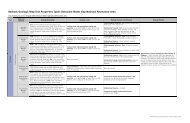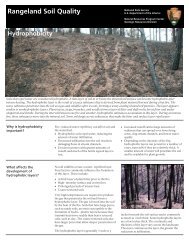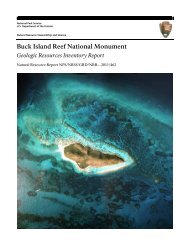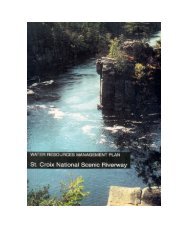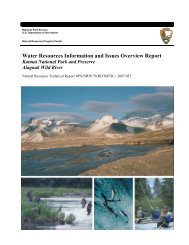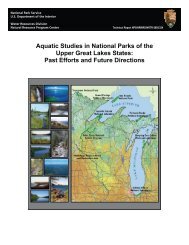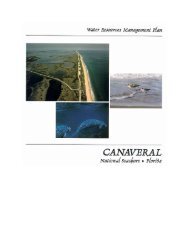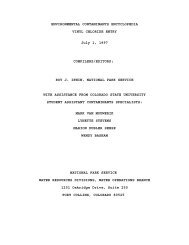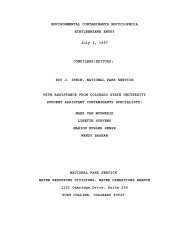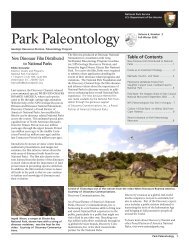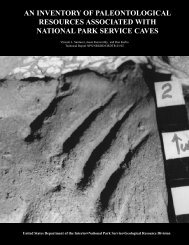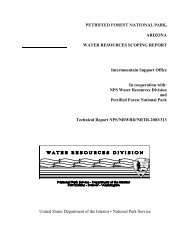ENVIRONMENTAL CONTAMINANTS ENCYCLOPEDIA ...
ENVIRONMENTAL CONTAMINANTS ENCYCLOPEDIA ...
ENVIRONMENTAL CONTAMINANTS ENCYCLOPEDIA ...
Create successful ePaper yourself
Turn your PDF publications into a flip-book with our unique Google optimized e-Paper software.
Northern Puget Sound; p. 33 USEPA 600/7-79-164<br />
(1979)].<br />
Sed.Concern Levels, Sediment Quality Criteria, LC50 Values,<br />
Sediment Quality Standards, Screening Levels, Dose/Response<br />
Data and Other Sediment Benchmarks:<br />
Sed.General (General Sediment Quality Standards,<br />
Criteria, and Benchmarks Related to Protection of Aquatic<br />
Biota in General; Includes Sediment Concentrations Versus<br />
Mixed or General Aquatic Biota):<br />
NOAA 1995: After studying its own data from the<br />
National Status and Trends Program as well as many<br />
literature references concerning different<br />
approaches to determining sediment criteria, NOAA<br />
suggested that the potential for biological effects<br />
of this contaminant sorbed to sediments was highest<br />
in sediments where its concentration exceeded the<br />
2100 ppb dry weight Effects Range-Median (ERM)<br />
concentration and was lowest in sediments where its<br />
concentration was less than the 160 ppb dry weight<br />
Effects Range-Low (ERL) concentration [664]. To<br />
improve the original 1990 guidelines [233], the<br />
1995 report included percent (ratios) incidence of<br />
effects for ranges below, above, and between the<br />
ERL and ERM values. These numbers represent the<br />
number of data entries within each concentration<br />
range in which biological effects were observed<br />
divided by the total number of entries within each<br />
range [664] (see also the entries entitled ERM and<br />
ERL):<br />
ERM 88.9<br />
Oak Ridge National Lab, 1994: Risk Assessment<br />
Screening Benchmarks for Sediment Concentrations.<br />
To be considered unlikely to represent an<br />
ecological risk, field concentrations should be<br />
below the following benchmark in mg/kg (ppm) dry<br />
weight [652]:<br />
For CAS 91-20-3 NAPHTHALENE (mg/kg dry wt.):<br />
0.407 is the ESTIMATED EQUIVALENT SEDIMENT<br />
QUALITY CRITERION at 1% Organic Carbon.<br />
AET from EPA 1988: The apparent effects threshold<br />
concentrations for naphthalene in sediments<br />
proposed for Puget Sound ranged from 2.1 mg/kg dry<br />
weight (microtox) to 2.7 mg/kg dry weight (benthic)<br />
[416]. Although the authors of the Puget Sound



